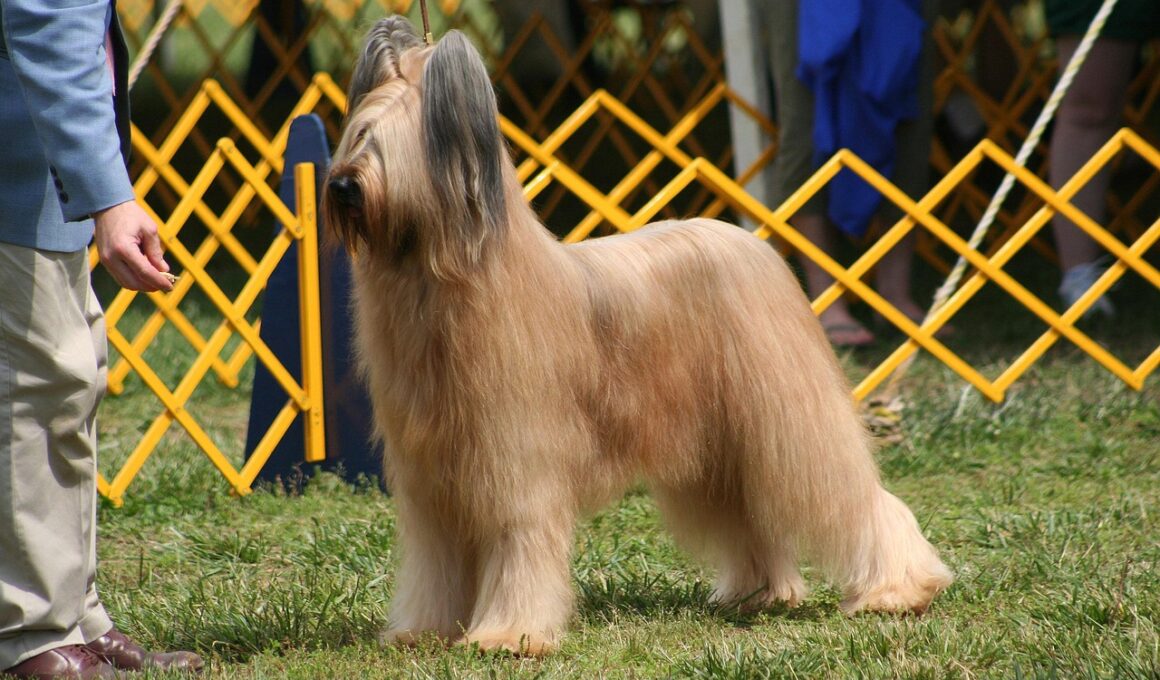Understanding the Different Classes in International Dog Shows
International dog shows are organized exhibitions showcasing purebred dogs from various countries, celebrating their beauty, skills, and adherence to breed standards. These shows function as a platform for breeders, exhibitors, and judges to present their dogs in a competitive environment. The shows are internationally recognized, and they draw participants from diverse backgrounds, all eager to have their dogs gain accolades. The structure of these competitions is defined by various classes that categorize dogs based on different criteria, such as breed, age, and size. Understanding these classes is crucial for both exhibitors and spectators alike. Each class reflects specific characteristics and standards that a dog must meet to be eligible for competition. Winners in these classes often compete in the best-in-show category, showcasing the finest representatives of their breed. Through these impressive displays, viewers appreciate the elegance and training involved in each dog’s preparation. In addition, dog shows can promote breed awareness and responsible ownership worldwide, connecting dog lovers across cultures. Thus, attending or participating in these events highlights the global appreciation of various dog breeds.
The Importance of Class Structure in Dog Shows
The class structure within international dog shows is integral to the competition’s overall success and fairness. Each participating dog is categorized into classes based on distinct rules and criteria established by governing canine organizations. This classification enables fair competition among dogs with similar traits, age brackets, and breed characteristics. For instance, puppies compete in separate sub-classes, which promotes equitable chances for younger dogs to shine, while adult dogs showcase their maturing beauty and skills. Classes are typically divided into categories such as puppy, junior, open, and champion, ensuring every dog competes against others of similar experience and age. Judges assess dogs based on predefined criteria, including gait, stature, and temperament, often using their expertise in breed standards to determine ranking. This structured approach to competition not only enhances the judging process but also improves viewer experience by showcasing the significance of each dog’s unique traits. Moreover, the class structure helps educate the audience on breed specifications and standards, fostering a broader appreciation for dogs and the dedication of their handlers. Therefore, understanding these classifications is vital for fully engaging with international dog shows.
Each breed showcased in international dog shows adheres to specific standards set by recognized organizations like the FCI and AKC. These standards outline the physical and behavioral qualities judges look for when assessing dogs during the competition. Generally speaking, breeds like Labrador Retrievers will have distinct characteristics that define their class. Each dog is evaluated based on conformity to breed standards, which dictate traits such as coat type, body structure, and temperament. These standards ensure that the breeds are represented as intended, despite individual variability among the competitors. Furthermore, spectators witness the breadth of diversity within dog breeds, from the towering Great Dane to the dainty Chihuahua. The experience is both educational and entertaining, revealing the incredible lineage and personality traits that each breed possesses. Handlers invest immense time in grooming and training their dogs, honing skills that enhance their dogs’ chances of winning in their respective classes. Hence, spectators often gain insight into the hard work that goes into preparing a dog for the show ring. This understanding heightens appreciation for both the dogs and their handlers, rewarding dedication in pursuit of excellence.
Classes Based on Age and Title
In international dog shows, dogs compete in classes not only by breed but also by age, resulting in various exciting competitions. Start with puppy classes, suitable for canine participants aged six months to under one year. This class allows young pups to shine in their performances, showcasing their energy and potential as future champions. Puppy classes are often lighthearted, focusing on proper breeding should they continue to participate in the dog show circuit. With time, junior classes enable younger dogs to step up and gain additional competition experience before transitioning to adult classes. Adult dogs then compete for a place in open or champion classes, where recognized titles must be earned. The open class accepts all eligible dogs regardless of previous titles, while the champion class is exclusive to dogs that have achieved a specific level of rank. This tiered approach allows judges and spectators to assess both mature dogs with proven records and potential stars emerging through their journeys. Understanding the distinct classes based on age not only informs about eligibility criteria but also optimizes competition, thereby validating accomplishments across different life stages.
Beyond age, classes in international dog shows may also vary based on the specific titles and points a dog may possess. As mentioned, champion classes are reserved for those canines who have already earned championship titles through competition. This prestigious classification reflects the dog’s previous achievements and skill set within the ring. Meanwhile, the open class remains highly competitive, providing an excellent stage for dogs still vying for their moments of fame. Many participants aim to compete in both classes to gain exposure and accolades through extensive runs in the ring. Additionally, specialty classes exist, showcasing purebreds while often emphasizing specific breed attributes. These special recognitions attract enthusiasts focused on particular breeds, fostering a deeper appreciation for each dog’s unique traits that relate to predefined standards. Throughout the year, various organizations conduct numerous shows, allowing a wide array of dogs to compete and earn points, further fueling interest and excitement about showcases. Consequently, understanding these different title-based classes enables participants and spectators alike to appreciate the broad landscape of international dog shows and the journey of each dog within the competitive framework.
Judging and Evaluation Process
The judging process in international dog shows is an essential element of how participants are ranked and recognized for their quality. Judges, highly trained and knowledgeable about breed standards, assess dogs with meticulous precision based on their physical characteristics, movement, and grooming. This comprehensive evaluation process goes beyond the superficial; judges analyze temperament and interaction with handlers, an important aspect of a dog’s showmanship. The scorecard reflects a range of criteria, ensuring a balanced judgment that encapsulates the essence of what makes a dog desirable per its breed. Handlers and owners invest considerable time preparing their dogs for evaluation, employing grooming techniques that highlight the dogs’ finest attributes. Presentations further enhance this effort, with handlers showcasing their dogs’ gait and playful spirit as they navigate the ring. The spectators benefit from this process, as they witness firsthand the judges’ decisions and rationale for each placement. Upon winning, dogs receive accolades and titles, often becoming highly sought-after companions due to their proven lineage and performance. In this sense, understanding the judging process enhances the entire experience of the international dog show.
In conclusion, international dog shows offer a rich variety of experiences for dog lovers, participants, and viewers alike. The various classes provide a well-structured competition framework, ensuring that dogs are evaluated based on specific criteria that reflect their breed’s expectations. By organizing events in this manner, organizers promote fairness and spread awareness of responsible ownership and breeding practices. Each dog participates in a class that highlights its unique capabilities and characteristics, making the competitive atmosphere lively and engaging. Understanding these classes fundamentally deepens appreciation for the dedication of both dogs and their handlers. Furthermore, spectators gain insights into the skills required to train dogs for competition. Events not only foster connections among dog enthusiasts but also serve as a platform for showcasing the beauty and variety of breeds. In the end, these shows play a critical role in the global canine community, enriching the relationships among pet owners, aspiring trainers, and breed enthusiasts. Thus, attending an international dog show can inspire and educate anyone passionate about dogs, whether they are novice owners or experienced professionals.
Visual elements, such as professionally taken photographs of the participating dogs, assist in enhancing the overall experience of international dog shows. Images become memorable highlights for attendees and participants, capturing moments of excitement and beauty. These visuals are often used in promotional materials, helping to raise awareness for future events and more dog shows. Asking questions about certain breeds through themed articles or blogs can further connect viewers to the world of dog showing. Attending these events or observing them online brings communities together and increases appreciation for the dedication involved in maintaining breed standards. Such efforts to highlight showcases and connect with broader audiences underscore the need to keep raising awareness about responsible breeding. Through engaging writing and captivating visuals, enthusiasts can share key takeaways, ensuring ongoing education and community growth. As a result, international dog shows can become platforms for knowledge-sharing, allowing people to discover and appreciate the rich tapestry of dog breeds and cultures. For those passionate about dogs, understanding the various classes and judging processes opens doors to discovering the art and dedication found within the world of dog showing.


